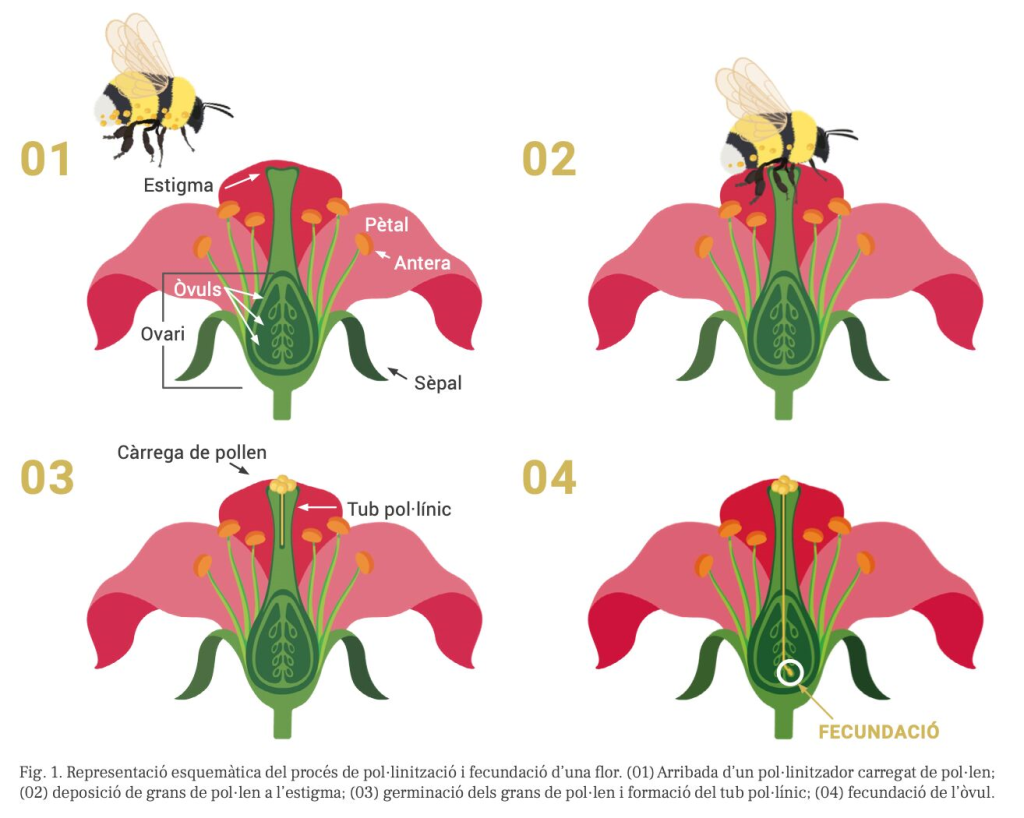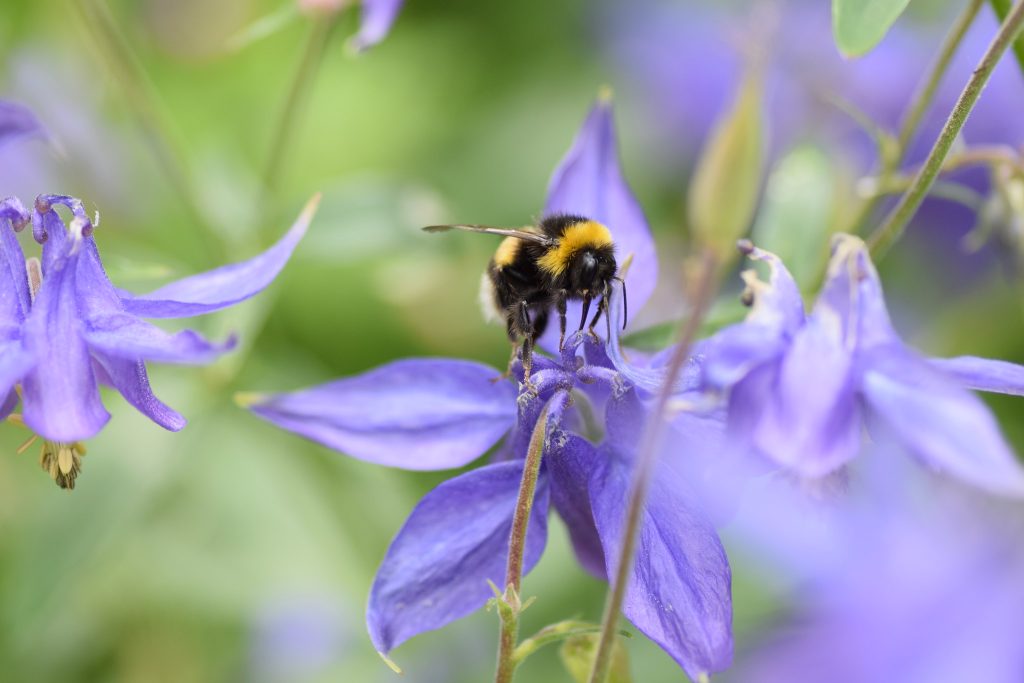Bees and flowers: made for each other
You are almost certainly familiar with the expression “as busy as a bee”, but not everybody appreciates just how busy bees and other pollinators are. Modern life is increasingly disconnected from nature and many people barely even notice bees going about their vital work, flying tirelessly from flower to flower. So, today, to mark World Bee Day, let’s look more closely at how pollinating insects behave.
Many flowers and insects have evolved together to make life easier for each other, establishing mutually beneficial relationships.
Rosemary, cistus, heather, broom, etc.; the Mediterranean region’s floral diversity, with all its varied shapes, colours and fragrances, is endless! And why so many different flowers? The answer is to attract insects. Many flowers (those pollinated by insects) and many insects (pollinators) have evolved together to make life easier for each other. The mutually beneficial relationships they have established have led to a veritable explosion of life.
What do bees eat?
Bees visit flowers in search of pollen and nectar. Female bees eat a lot of nectar, which has a high sugar content and serves as an energy source. They also eat some pollen, which is rich in the proteins they require for ovary maturation, among other things. Male bees consume plenty of nectar too, but do not eat much pollen as they have no maturation needs (they simply mate and die).
Bee larvae grow and develop inside their nests or hives. They eat what adult females bring them: mainly pollen, mixed with some nectar, because they need a large amount of protein to develop properly.

Interaction between flowers and pollinating insects has been one of the main drivers of genetic exchange in ecosystems. Its success is undeniable: it has been the key factor behind a great deal of terrestrial biodiversity. Neither the proliferation of flowers in meadows, marshes, shrublands and forests nor the resulting surge in butterflies, bees and numerous other insects would have been possible without such interaction.
Evolution has favoured bees that live longer and feed on different types of flowers.
Most of the world’s bee species are generalists, meaning that they pollinate many different kinds of flowers rather than specializing in one in particular. Bees that seek and eat pollen from just one flower species are extreme specialists; such behaviour is an exception in nature. Specialized bees have an adult lifespan (technically referred to as a flight period) of just a few days, which must coincide with the flowering season of their specific food source. The risks involved if the flight period and the flowering season do not coincide or if either the flower or the insect species disappears are all too clear. Consequently, evolution has favoured species that live longer and feed on different types of flowers; generalist bees, in other words.
A network of lives in which generalism is the norm
Despite the more general theory, the relationships between flowers and their pollinators are remarkably complex, encompassing many unique scenarios. In addition to fostering biodiversity, this interplay has captured the interest of biologists who study the rules governing interactions among living organisms. How many insect species pollinate a particular plant species? How many different types of flowers does a specific insect species feed on?
To answer those questions, scientists have spent hours and hours lying on the ground, observing flowers and counting the insects that visit them. For years now, CREAF has been conducting that kind of research in Garraf Natural Park. The data it has collected has led to the creation of the diagram below, which shows who interacts with who in the park.
The ‘interaction network’ is a highly visual resource that shows connections between species, making it easy to understand which bees visit each flower and which flowers each bee visits. Representing data in this way not only generates a visual impact but also makes it possible to detect patterns that might remain hidden in other kinds of charts and graphs. Let’s look at some examples:
- Rosemary (Rosmarinus officinalis) and thyme (Thymus vulgaris) are the most visited flowers in Garraf Natural Park, both because bees like them and because they are the park’s most abundant flowering plants. Rosemary is one of the first plants to flower; it does so in around February. On the one hand, this allows it to offer pollen and nectar before there is a lot of competition to attract pollinators. On the other hand, relatively few insects are active in February. That would be an obstacle to the plant’s reproduction, if it were not for the fact that it produces a great many flowers to encourage the few insects around to choose it.
- In contrast, the grey-leaved cistus (Cistus albidus) blooms between April and May, when pollinators are highly active and competition for their attention is at its fiercest. However, the large flowers of the grey-leaved cistus are loaded with pollen and offer plenty of nectar too, enabling it to attract a wide range of species — not only bees but also beetles and other insects.
- Garraf Natural Park is home to some specialist bee species, such as Osmia fulviventris, which only collects pollen from the flowers of plants of the Asteraceae family, although it may visit other plants solely for nectar.
- Larger bee species, such as the buff-tailed bumblebee (Bombus terrestris), consume a lot of pollen and nectar and need to be efficient when choosing which flowers to visit. They therefore tend to prefer either plants that produce a large number of flowers (like rosemary does), even if those flowers are small (as in the case of thyme), or plants whose flowers are few in number but large and packed with pollen (grey-leaved cistus, for example).
- European honeybees (Apis mellifera) are a very special case, as their populations depend on human management and they cannot be considered a ‘natural’ species. The diagram clearly shows that they have a generalist diet. Additionally, they do something no other bee species does: they recruit their nestmates when they find good sources of nectar or pollen, enabling them to exploit resources more efficiently.

Orchids and figs: cases of specialization
Studies have shown generalist species to be prevalent in Garraf Natural Park and beyond. Nonetheless, there are some noteworthy examples of highly specialized plant-insect interactions in Catalonia:
- Orchids and Eucera bees:
Orchids of the Ophrys genus have flowers that mimic the appearance and scent of female bees from certain Eucera species. Male bees are attracted to this imitation. They attempt to mate with the flower and become coated in pollen, which they then carry to other flowers. This facilitates pollination.
- Ficus trees and fig wasps:
Fig trees (which belong to the Ficus genus) have a symbiotic relationship with fig wasps. Each Ficus species is pollinated by one or just a few particular wasp species. The wasps crawl into unripe figs to lay their eggs. In the process, they pollinate the flowers found inside the fig. The larvae develop within the fig and eventually emerge to carry pollen to other trees.
The above examples show how plants and pollinators have developed specialized traits through coevolution, establishing relationships of mutual dependence that enhance their chances of surviving and reproducing.







